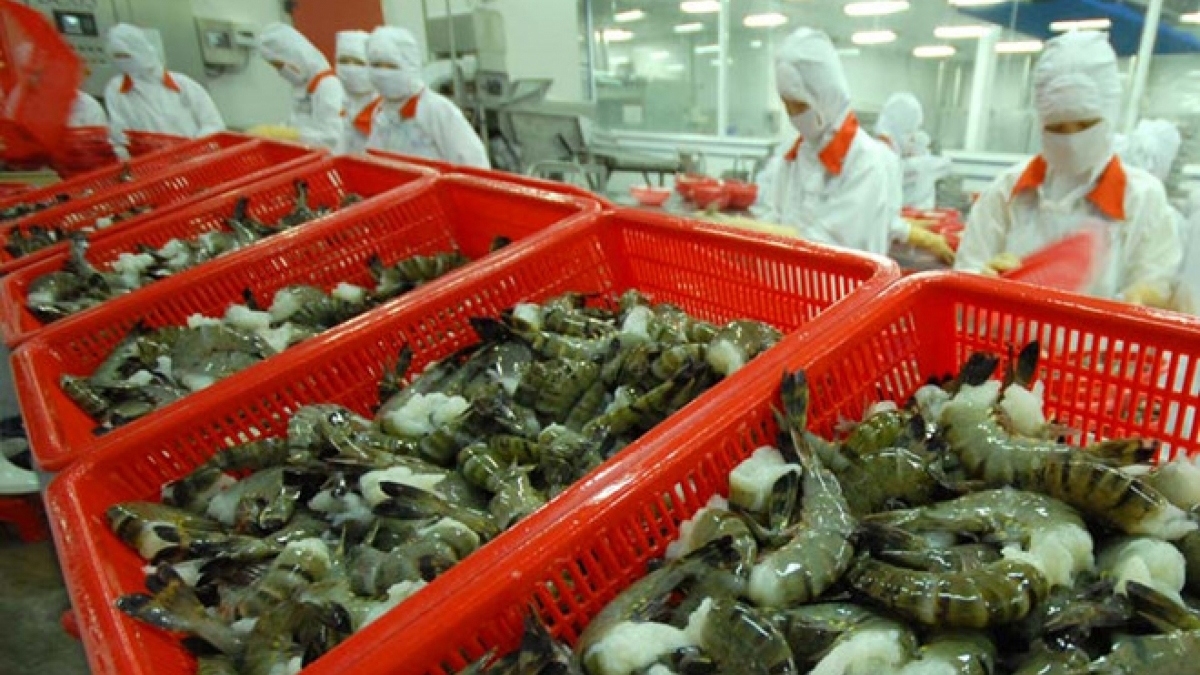Shrimp industry to face challenges due to global economic downturn
VOV.VN - Vietnamese shrimp exports are anticipated to undergo a series of challenges caused by the global inflation and economic downturn this year, leading to a decline in consumption demand in major markets, according to details given by the Vietnam Association of Seafood Exporters and Producers (VASEP).
Furthermore, Vietnamese shrimp exporters must directly compete with rivals such as Ecuador and India in terms of price, experts said, noting that the import demand is expected to recover from the second quarter with lower prices compared to 2022.
The VASEP’s statistics indicate that Vietnamese shrimp exports during the opening three months of the year suffered an annual decline of 37% to US$600 million.
In fact, shrimp exports to major markets in March witnessed a downward trajectory. Notably, exports to Japan and the Republic of Korea decreased by around 20%, while exports to the United States, the EU, and China dropped by some 40%.
Japan remains the largest importer of Vietnamese shrimp, accounting for 17.6% of the overall figure. In the first quarter of this year, shrimp exports to this market dropped by 29% to more than US$105 million on-year.
The demand for shrimp imports from the Japanese market this year is expected to remain stable thanks to low inflation and better profit margins.
Meanwhile, Vietnamese shrimp exports to the US during the reviewed period declined by 46% to more than US$104 million on-year due to high inflation, a reduction in purchasing power, and high inventories from 2022.
According to data from the US Department of Agriculture, the US imported 6,322 tonnes of shrimp products worth US$66 million from the Vietnamese market during the two-month period, representing a fall of 44% in volume and 49% in value on-year. The average import price dropp by US$1 per kilo on-year from US$11.4 per kilo to US$10.4 per kilo.
Elsewhere, shrimp exports to the EU market during the first quarter of this year plunged by 44% to US$89 million on-year. Industry insiders pointed out that shrimp exports to the EU are anticipated to slow down due to the impact of the Russia-Ukraine conflict.
Furthermore, the local shrimp industry will continue to encounter difficulties in terms of the supply source of raw materials and disease control, while the ratio of shrimp farming areas in line with the Good Agricultural Practices (GAP) and organic standards remain low.
Moreover, the production cost of shrimp remains much higher than that of Ecuador and India. To achieve these set goals, local businesses are required to optimise costs, focus on developing added value, improve product quality, and actively change product structure in a bid to meet the needs of each market segment.
Especially, they have been recommended to prepare raw material sources and improve production capacity in a bid to keep up with shrimp demand as the global market recovers.



